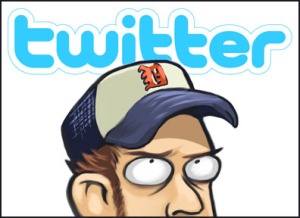 Twitter was created by Jack Dorsey and became an incorporated company in May of 2007. The concept of Twitter relies on messaging services, whether through the use of cell phones, instant messengers, such as Yahoo Messenger or MSN Messenger. It allows users to send messages to friends and family quickly and easily. Twitter only asks “What are u doing?” and as long as one’s answer is 140 characters or less, it is possible for thousands of people to see the answer immediately.
Twitter was created by Jack Dorsey and became an incorporated company in May of 2007. The concept of Twitter relies on messaging services, whether through the use of cell phones, instant messengers, such as Yahoo Messenger or MSN Messenger. It allows users to send messages to friends and family quickly and easily. Twitter only asks “What are u doing?” and as long as one’s answer is 140 characters or less, it is possible for thousands of people to see the answer immediately.
A user can follow other users as well. It’s easy to have conversations with other people and before long; many people will be reading updates from many different people. Twitter is a really unique social media tool that helps individuals to engage with effective:
- Article marketing
- Social networking
- Promotion of traffic to specific websites
- Staying in touch with people
Once a Tweet is posted on the webpage, people are able to easily see what other people are doing. Users can in turn let others know what is going on with them as well as commenting on their posts.
Twitter as a media tool
This ability to mass communicate is revolutionising the speed at which information can be disseminated. Social media tools such as Twitter make it easier for breaking news to be disseminated to distant places within a short space of time. With Twitter a person in China and one in Zambia can simultaneously get information about an event that just happened in Mexico with having to wait for news bulletins to aggregate the information for them.
The 140 character limitation that Twitter has enables users to post “Headline” like tweets which give the reader enough information about what has happened. Most news agencies and organisations are also using Twitter to promote their content on their tv channels and online news portals. The CNN for example uses Twitter to distribute headlines of top and current events and then people who get these twitter feeds then log onto the CNN website to read the full articles.
Over the last eight days, Twitter has managed to raise eyebrows and debate over the way people are exchanging information about the Swine Flu virus via the website. The site reported that over 10 000 posts concerning the swine flu virus were being posted every hour during the last two days. People are educating and informing each other about the virus via the website. Although this is a good thing there are questions of the reliability and validity of the information being passed around. Some twits have links to reputable sites whilst other twits just give advice on how to deal with virus.

Citizen Journalism via Twitter
However, Twitter, has also been an effective tool for citizen journalism. People from all over the world have realised the mass communication potential that Twitter has and have began to use it as a channel for voicing their marginalised voices. In Iran, citizens used twitter to update the world on what exactly was happening on the ground. Mainstream media outlets were viewed by many of the protestors in Iran as giving out biased news coverage on the intensity of the problems in Iran. So through the use of Twitter and other social media platforms which are not regulated by the government ordinary Iranians managed to voice their opinions to the world.
Twitting alongside blogging has caused eyebrows to be raised especially in the journalism industry. These social media tools have managed to equip ordinary citizens into news mediators who are not restricted or monitored by any governing body. This can be a good thing in the sense that gatekeeping can at times limit freedom of expression but on the other hand the absence of watchdogs leaves the media audience at the mercy of flawed information.
Can we trust Twitter?
So having realised the potential and effectiveness that Twitter has, the question that one can ask is how beneficial is this media tool in relation to its free for all use by ordinary citizens. Twitter has its pros and cons and it has proved to be a fast way of disseminating and raising debates but is this tool ready to be used as a major source of information alongside well established news sources?
Recent Comments